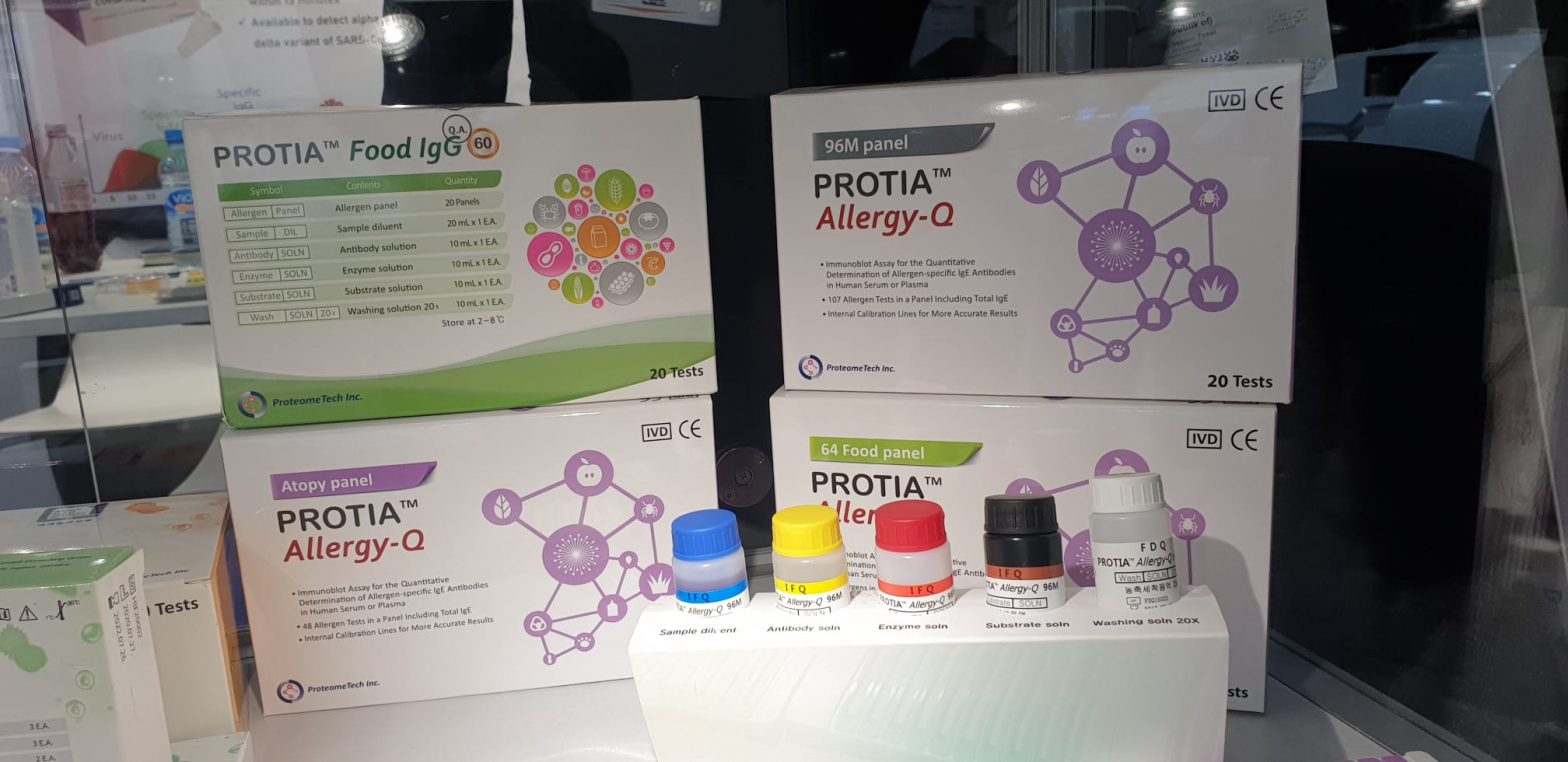Food Detective™ is a food antibody (IgG) blood test that can be conveniently used in a healthcare professional’s office. You don’t have to send in a sample and wait weeks for results from a testing lab. The test tray that shows whether the patient has IgG antibodies to specific foods has areas stained with food protein extracts.
A small sample of blood is taken from a finger prick and then diluted and added to the tray. In subsequent steps, the use of detector and developer solutions identifies the presence of food antibodies through the appearance of one or more blue dots on the tray. Reference to the meal distribution plan included in the instructions allows you to identify any foods to which the patient may have an intolerance.
Food Detective™ has been designed for use by individuals and health professionals. The test is safe and easy to use. The test takes 40 minutes to perform and no specialized equipment is needed, everything is provided to you in the test kit. If after taking the food screening test you need help reading the results or if you test positive for one or more foods, you can contact us for further help and advice.
Food Detective measures IgG antibodies that may be linked to inflammatory conditions in the body, manifesting in a variety of health problems. The reaction tray is stained with food protein extracts. A small sample of blood is taken from a finger prick and then diluted and added to the tray.
In subsequent steps, the use of detector and developer solutions identifies the presence of food antibodies through the appearance of one or more blue dots on the tray. Reference to the food distribution plan allows the identification of foods that cause antibody production. Once identified, trigger foods can be removed from your diet.
Food Detective™ Food List
- Cereals
Corn, Durum Wheat, Gluten, Oats, Rice, Rye, Wheat.
- Nuts and Beans
Almond, Brazil nut, cashew, cocoa bean, peanut, mixed legumes (pea, lentil, bean), soybean, walnut.
- Meats
Beef, Chicken, Lamb, Pork.
- Fish
Freshwater fish mix (salmon, trout), Seafood mix (prawns, prawns, crab, lobster, mussel), Tuna, Whitefish mix (haddock, cod, plaice)
- Vegetables
Broccoli, Cabbage, Carrot, Celery, Cucumber, Leek, Peppers (red, green, yellow), Potato.
- Fruit
Apple, blackcurrant, grapefruit, melon mix (cantaloupe, watermelon), olive, orange and lemon, strawberry, tomato
- Other
Egg (whole), Cow’s Milk, Garlic, Ginger, Mushrooms, Tea, Yeast.
What is food intolerance?
It has long been known that the consumption of certain foods can have different effects on people’s physical and mental health. Food intolerance is the body’s inability to properly digest certain types of food, and symptoms are largely confined to the digestive tract. This can cause uncomfortable symptoms such as diarrhoea, vomiting, bloating, cramps, and general gastrointestinal pain, but is not usually life-threatening.
Food intolerance can be so mild that it goes unnoticed, and up to 45% of people are thought to have some form of food intolerance. Unfortunately, because these sensitivities often go undetected or untolerated, they can cause long-term damage that manifests later in life.
Food allergies, unlike food intolerances, are a strong reaction to specific types of food and can cause a number of symptoms, ranging from mild to life-threatening. An allergic reaction can occur with even the slightest exposure to food, such as eating a microscopic amount, touching the food, eating other food that was cooked in the same pan, etc.
If you have a strong reaction to food, this is probably an allergic reaction and you should seek medical attention immediately. One of the problems with a food intolerance diagnosis is that symptoms are often delayed. Symptoms can start hours or even days after eating, making it difficult to know which food caused a reaction.
One way to determine your food intolerance is to implement an elimination diet, in which you start by eliminating some foods from your diet until your symptoms go away. Then you slowly start to introduce these foods again, until one of them triggers a reaction. Diagnostic tests that can guide you through this process are a great first step, as they can make the entire procedure much easier by highlighting what to remove first.
